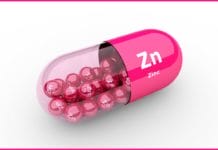As if cigarettes aren’t enough of a battle, there is also smokeless tobacco (SLT) that plagues the population. The smokeless tobacco industry sold a whopping $4.98 billion in 2022, which only validates the seriousness of the addiction in the United States.1
It appears that people choose this method because it is slightly more discreet and is not accompanied by an odor. Some admit to transitioning to smokeless tobacco as a method to cease cigarette smoking. Many think SLT is a safer alternative because there is no ingestion into the lungs. But is smokeless tobacco safer?
Smokeless Tobacco Ingredients
Smokeless tobacco is a spit tobacco that is inserted into the mouth via three forms: chew, plug, and snuff. These forms of tobacco include similar ingredients to a cigarette. However, there are a plethora of other ingredients that can be found in this form of tobacco.
Nicotine
Nicotine is the core of all tobacco products. It is absorbed more slowly in SLT but constitutes three to four times the amount of nicotine than a single cigarette. Nicotine from chewing tobacco also stays in the bloodstream longer.2
Sweeteners
Much like cigarettes, smokeless tobacco contains sweeteners/sugars to improve the taste.3 Because smokeless tobacco is held against the tissue and teeth, this increases the risk of tooth decay and staining.2
Smokeless tobacco contains 28 carcinogens, including the following:
Nitrosamines
The metabolites of tobacco-specific nitrosamines (NNK/NNN) are powerful carcinogens considered to be among the leading causes of oropharyngeal, oral cavity, and lung cancer for those who use tobacco products.4
Formaldehyde
When smokeless tobacco is used, nicotine is absorbed through oral tissues, and formaldehyde is released.5 Formaldehyde is a chemical found in the resins used to manufacture wood products, insulation, fertilizer, and pesticides. High levels of formaldehyde exposure may cause adverse side effects, such as cancer.6
Acetaldehyde
Acetaldehyde is a flavoring agent, but otherwise, a colorless and flammable liquid found in gasoline and diesel exhaust. It is shown to increase the risk of cirrhosis of the liver, multiple forms of cancer, and irritation of mucous membranes.7
Arsenic
Arsenic is a chemical found in pesticides. This chemical can cause a wide range of medical issues, such as headaches, vomiting, and skin, bladder, and lung cancers.8
Polonium 210
Polonium 210 is a radioactive element found in tobacco fertilizer. This chemical becomes hazardous when consumed, especially with continuous exposure, thus increasing the risk of cancer.9
Is Smokeless Tobacco Safer Than Cigarettes?
While cigarette use has decreased over the decades, smokeless tobacco has not and is largely used by males.10 Smokeless tobacco increases the risk of oral cavity and oropharyngeal cancers. Those who specifically use snuff are 50% more at risk of developing buccal mucosa and gingival-related cancers than those who do not.11
While cancer is one of the major risks associated with smokeless tobacco, correlations have been made with various other health-related problems. Cardiovascular diseases are at an increased risk with SLT users, as well as dental-related diseases. Periodontal disease, tooth erosion, and dental decay are all consequences of using smokeless tobacco. Leukoplakia, a pre-cancerous lesion, is also an issue that develops in at least 75% of all SLT users.11
Smokeless tobacco is not safer to use nor a safe alternative to any tobacco habit. In fact, tobacco should not be considered safe at all. “Dipping” eight to 10 times a day can bring as much nicotine into the body as 30-40 cigarettes.11
One company has strived to provide a safer alternative to smokeless tobacco. Founded by two college students, Grinds made a debut on Shark Tank in 2011. Grinds uses flavored coffee grounds in a pouch to provide the same oral fixation of smokeless tobacco with a caffeine boost.
In addition to coffee, each pouch contains flavorings and vitamins, including vitamin B12, which helps to combat nicotine cravings. While no studies or research has been provided on the effects of Grinds, it appears to be free of carcinogens and way less harsh on overall health.
In Closing
Dental hygienists are provided with the perfect platform to evaluate the oral cavity and provide oral cancer screenings during appointments. It is during these appointments that we can raise awareness of potential and developing issues related to tobacco. Armed with sufficient knowledge and advice, we can help guide patients into a healthier lifestyle.
Before you leave, check out the Today’s RDH self-study CE courses. All courses are peer-reviewed and non-sponsored to focus solely on high-quality education. Click here now.
Listen to the Today’s RDH Dental Hygiene Podcast Below:
References
- FTC Releases Reports on Cigarette and Smokeless Tobacco Sales and Marketing Expenditures for 2022. (2023, October 23). U.S. Federal Trade Commission. https://www.ftc.gov/news-events/news/press-releases/2023/10/ftc-releases-reports-cigarette-smokeless-tobacco-sales-marketing-expenditures-2022
- Conrad Stöppler, M. (2023, June 5). Chewing Tobacco (Smokeless Tobacco, Snuff). MedicineNet. www.medicinenet.com/smokeless_tobacco/article.htm#what_is_chewing_tobacco
- Rezk-Hanna, M., Talhout, R., Jordt, S.E. Sugars and Sweeteners in Tobacco and Nicotine Products: Food and Drug Administration’s Regulatory Implications. Nicotine and Tobacco Research. 2023; 25(4): 838-840. https://www.ncbi.nlm.nih.gov/pmc/articles/PMC10032193/
- Hecht, S.S., Stepanov, I., Carmella, S.G. Exposure and Metabolic Activation of Biomarkers of Carcinogenic Tobacco-Specific Nitrosamines. Accounts of Chemical Research. 2016; 49(1): 106-114. https://www.ncbi.nlm.nih.gov/pmc/articles/PMC5154679/
- Dip, Chew, Snuff, Snus: “Smokeless” Doesn’t Mean “Safe.” (2019, May 16). U.S. Food and Drug Administration. https://www.fda.gov/tobacco-products/products-ingredients-components/dip-chew-snuff-snus-smokeless-doesnt-mean-safe
- Facts About Formaldehyde. (2024, September 11). U.S. Environmental Protection Agency. https://www.epa.gov/formaldehyde/facts-about-formaldehyde
- PubChem Compound Summary for CID 177, Acetaldehyde. (2025, June 14). National Center for Biotechnology Information. https://pubchem.ncbi.nlm.nih.gov/compound/177
- PubChem Compound Summary for CID 5359596, Arsenic. (2025, June 14). National Center for Biotechnology Information. https://pubchem.ncbi.nlm.nih.gov/compound/5359596
- Facts About Cigarette Smoking and Radiation. (2024, February 20). Centers for Disease Control and Prevention. https://www.cdc.gov/radiation-health/data-research/facts-stats/cigarette-smoking.html
- Couch, E.T., Chaffee, B.W., Gansky, S.A., Walsh, M.M. The Changing Tobacco Landscape: What Dental Professionals Need to Know. Journal of the American Dental Association. 2016; 147(7): 561-569. https://www.sciencedirect.com/science/article/abs/pii/S000281771600057X
- Tobacco Forms and Types. (n.d.). Oral Cancer Foundation. https://oralcancerfoundation.org/understanding/tobacco/tobacco-forms-types/











